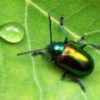My photographs fall into two categories: incidental shots I happen upon by chance, and premeditated images mapped out in advance. There's not much to say about the first type. I wander about in the woods as another camera-toting tourist, and sometimes I get lucky with an interesting subject. A naturalist's eye and a basic ability to operate photographic equipment suffice to produce usable photos.
As my photographic career progresses, though, more of my work is premeditated. Partly this shift is inherent to a growing business. Clients have requests for particular subjects doing particular things, and I go shoot them.
But mostly I plan photographs because they look better. With precise control over composition and lighting I can walk away with a good image nine times out of ten.

What decisions shape a planned image? The subject is obviously selected to be of interest for some story or another. But other aspects are also important.
- Width or length of the optics. Do I want a wide angle from up close that captures the animal's habitat and point of view? Or a long shot that isolates the subject?
- Angle of attack. Side view? Top view? Head-on?
- Color and structure of the background. Should I arrange a complementary color? Should I simplify it to basic black or clean white?
- Lighting. Should I backlight? Spotlight? Diffuse? Mix multiple sources?
- Motion. Do I want to convey movement with panning or motion blur?
- Image orientation. Is this a long portrait for a magazine cover? Or more of a panorama?
Recently I've been visualizing a lot of my photographs before I take them. The process of translating imagination to photography reminds me of musical improvisation, of hearing the melody before playing it. It cultivates a sense of control over the medium.
Anyway. I'm rambling. Here's a sampling of planned images:





That's amazing! I rarely plan my photographs. I mean, they do become planned, but usually after several frustrating shots! =] Great advice!
Nature faker! :)
i plan 4 my fotos 2 SUCK n i m never DISAPPOINTED!!
I still don't know enough about bugs and their behaviour to properly plan ahead for photographs. When I spot a bug with potential I start by taking a few record shots that will at least give a chance for I.D. Then I begin shooting while moving slowly forward, trying to keep the critter in the correct focal plane while developing the composition. It's only on those occasions when I realize that it isn't going to fly or scramble away that start planning how I can vary or improve the shots.
The gliding ant shot is amazing! Someday I'd like to see an article on how you did that.
I'm mostly the opposite: incidental images are my thing and planned images are exceptions. Which explains a great deal about my results.
And I just learned about gliding ants today. I'd never heard of them before.
"We dropped this poor gliding ant over 300 times while I figured out the lighting, backdrop, and timing."
If I am ever looking for a portrait of myself, I will remember not to call you.
These gliding ant had amazed me completely, thank you for the link!